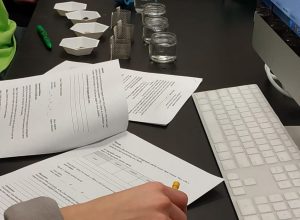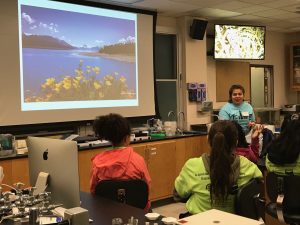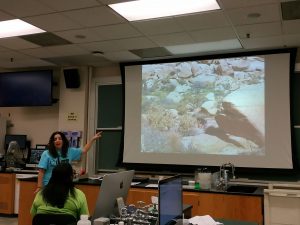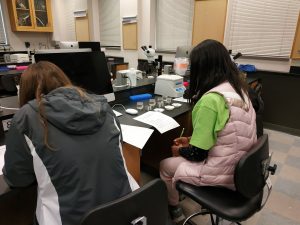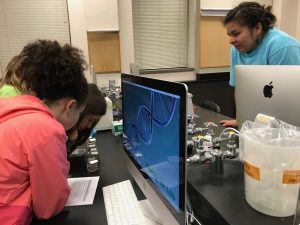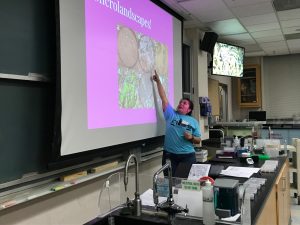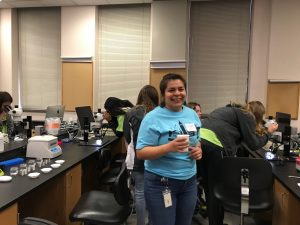Jenna & fellow Mishler Lab grad student Ixchel Gonzalez led a workshop at the Expanding Your Horizons (EYH) workshop. EYH is a STEM conference for middle-school girls in the Bay Area. They attend a full day conference complete with keynote speakers and hands-on science, technology, engineering, & mathematics workshops.
The workshop was called “The Living Skin of the Earth.” In it the girls learned about the importance of biocrust communities, learned to recognize major organisms in them, and experimented to test the soil aggregate stability of different biocrust samples. They tested the hypothesis that increasing functional group diversity in biocrust communities results in increasing soil aggregate stability.
Most students found crust A to be bryophyte dominated, with lichens present; B to be lichen dominated, and C to be filamentous cyanobacteria dominated. Sample D was a most often categorized as bare soil but some students found evidence of filamentous cyanobacteria in it, too.
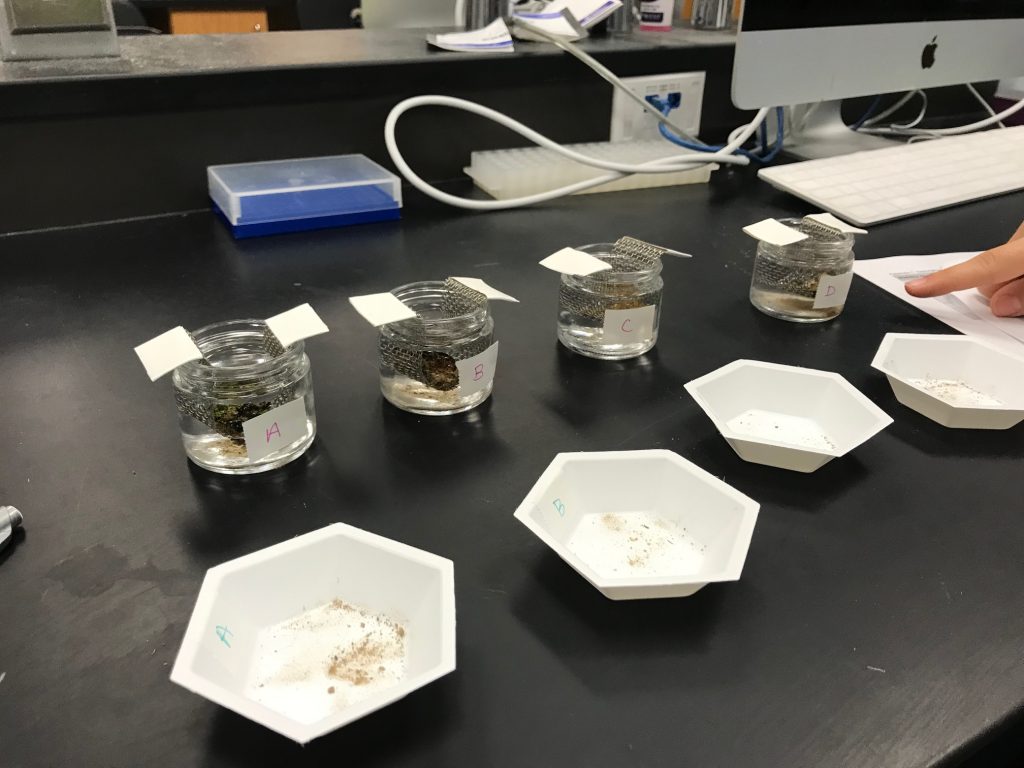
Students followed a modified version of the USDA slake test guidelines to assess aggregate stability in their soil samples. I was worried the students would find the stability classes and descriptions daunting but they seemed to do alright with it! They understood well enough the concept of giving the crusts a ‘grade’ based on how well the soil held together.
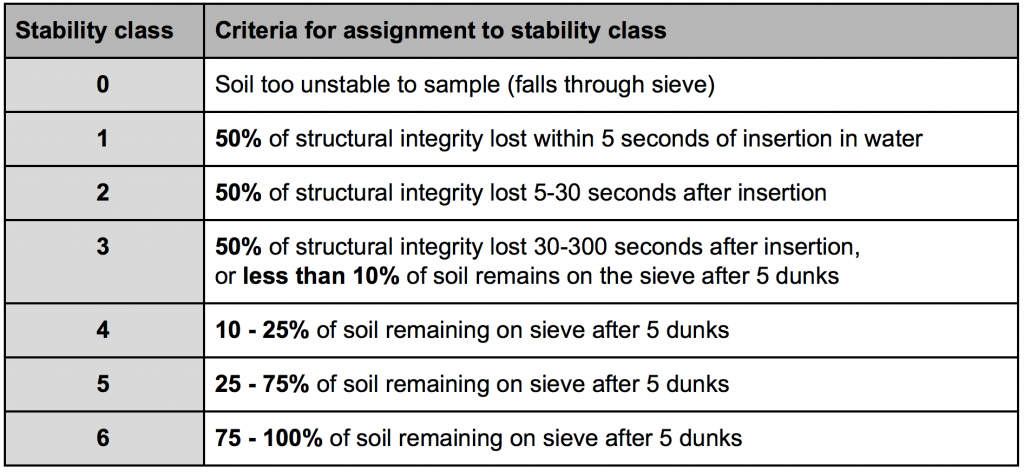
We used google sheets for students to enter their results and auto-generate a plot, eventually combining all the groups from each of the three workshop sections of the day. We then revealed to them what we found to be the dominant organisms in the four crust types, but stressed that even within those groups there will be variation (i.e, not all mosses are the same!). We used the variability in the bar chart to discuss variation in science and the need for repetition and large ‘sample sizes.’ The results, don’t seem to show any clear pattern among the aggregate stability of the dominant organisms. Nonetheless, it does seem clear that presence of any of these major organisms results in much higher aggregate stability than bare soil.
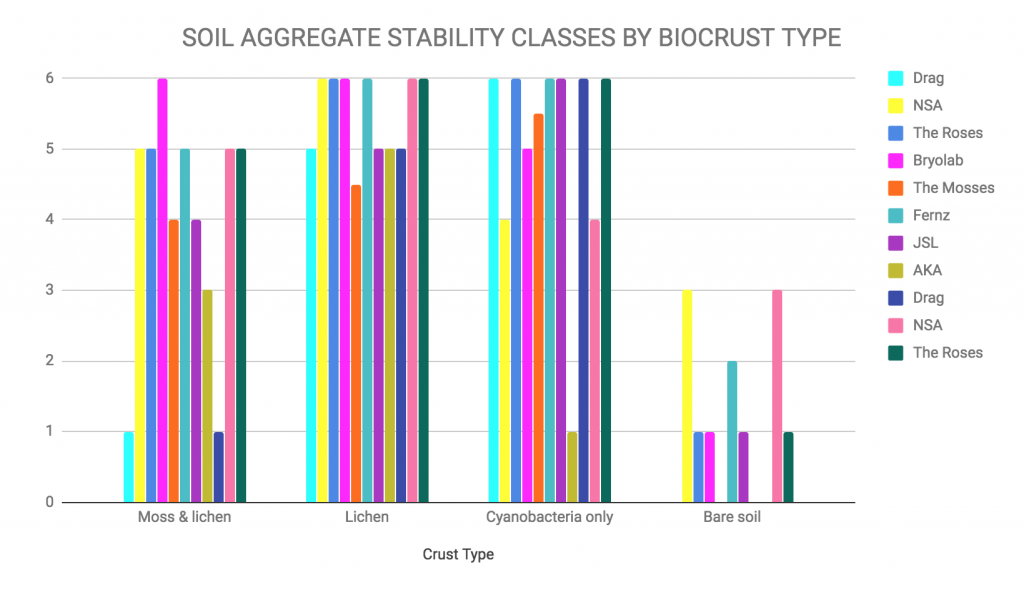
We used google sheets for students to enter their results and auto-generate a plot, eventually combining all the groups from each of the three workshop sections of the day. We then revealed to them what we found to be the dominant organisms in the four crust types, but stressed that even within those groups there will be variation (i.e, not all mosses are the same!). We used the variability in the bar chart to discuss variation in science and the need for repetition and large ‘sample sizes.’ The results, don’t seem to show any clear pattern among the aggregate stability of the dominant organisms. Nonetheless, it does seem clear that presence of any of these major organisms results in much higher aggregate stability than bare soil.
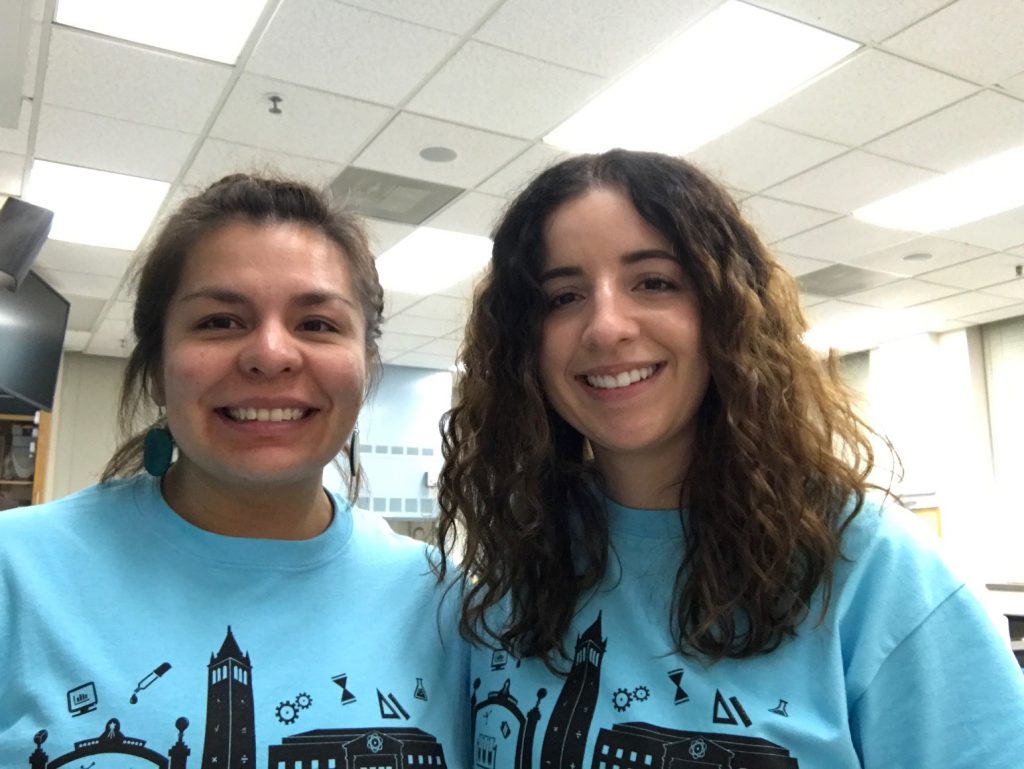
The workshop was a lot of fun and I think it went well for a first pass! We will be making some small changes to it and hopefully running it again and making it available for educators to use real soon. We call it a success!
Favorite quotes of the day:
“OKAY, this exciting, I think that one has cyanobacteria, I saw the danglies!” ♥
and:
“OOOH, I think this is a dormant plant because it has leaves!” ♥
